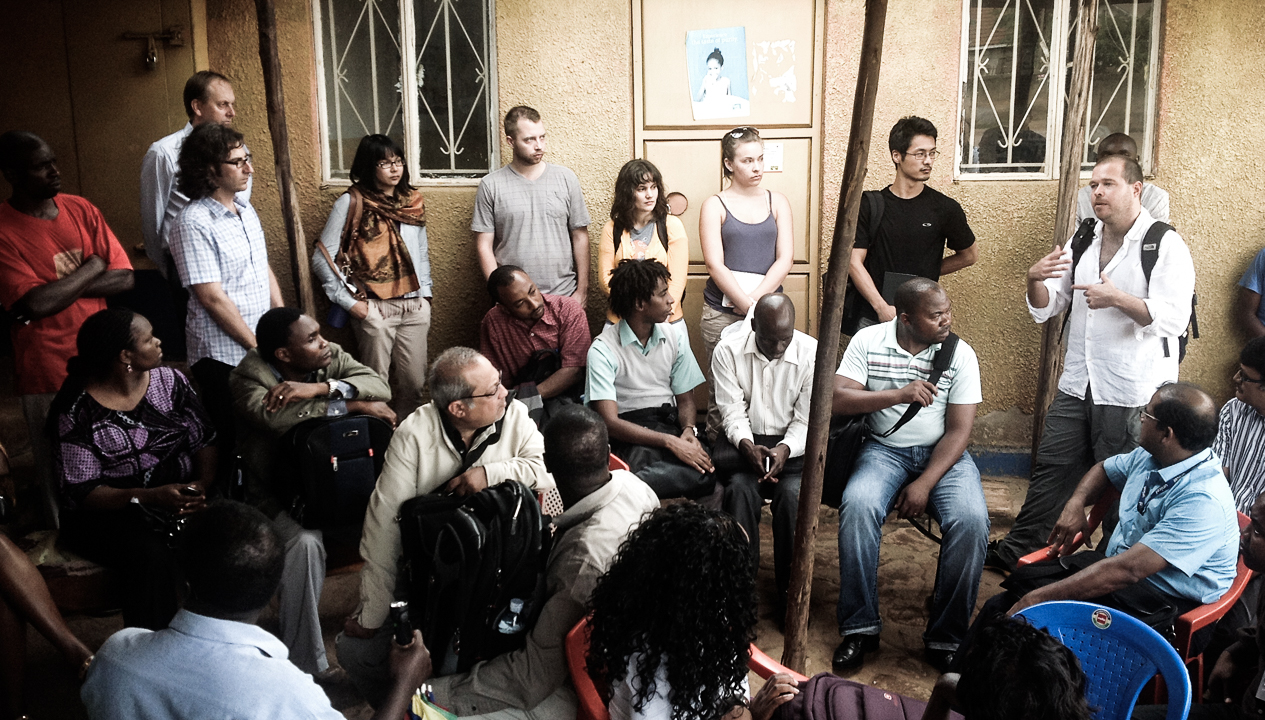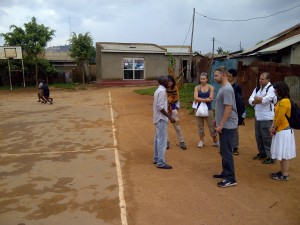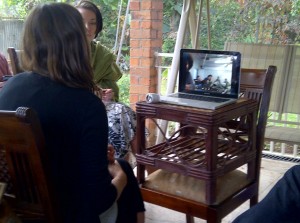In this re-post from the Stories of UNICEF Blog, Chris Fabian (Co-Lead, Innovation Unit, UNICEF) shares his thoughts about global, hybrid collaborations and how they relate to current UNICEF projects. One project in particular, involves Art Center students from the brand new Media Design Practices Field Track. Students and faculty are currently in Kampala, Uganda conducting field research at UNICEF’s Innovation Lab.
Students on the Media Design Practices Field Track work in a real-world context where social issues, media infrastructure, and communication technology intersect. Field track partnerships such as UNICEF are run jointly with Designmatters.
To learn more, check out the MDP/Field Track Blog.
Global, hybrid collaborations and what they mean for UNICEF
I have spoken a great deal recently about how UNICEF’s global network of operations, partners and work is a powerful counter-weight to the hyper-locality of focus we have in the field. A child protection specialist in Zimbabwe may be entirely focused on issues of cross-border registration of children in two or three key border crossings (the hyper-local). That specialist’s areas of need, articulated or not, echo throughout the broader organization and fall into categories such as: identity, realtime information, and better programme management.
The tension between what our immediate needs are and what our global mandate allows us to achieve provides tremendous possibilities when we are looking developing, adapting, and scaling innovations for children. Solving the problem with a colleague in Zimbabwe – in a way that lets us adapt and scale that solution – means also solving a problem for an organization of 15,000 staff, with a global mandate to support the rights of children.
I was lucky, yesterday, to be part of a prototype of this type of local->global->local knowledge transfer. We connected graduate students at New York University’s “Design for UNICEF” class, in Manhattan, with a cohort of graduate students in the Art Center for Design’s “Media Design Matters” program, who are in Uganda for six weeks. Both groups of students are looking at opportunities for innovation and acceleration around products and services in Uganda.
The NYU students have access to UNICEF’s headquarters staff – we bring experts down each week to talk to them – and a fairly well developed (with Clay Shirky, John Dimatos and others) curriculum taught (this year) by me and Jorge Just. They have no direct, physical access to Uganda. The Art Center students have less consistent access to UNICEF staff – though excellent guidance from professors Chris Csikszentmihalyi, Elizabeth Chin and Sean Donahue – but have the luxury of being in country, based out of UNICEF’s Innovation Lab, for substantial periods of time.
Yesterday, the nine Art Center students, three faculty and I sat on a veranda in Kampala and connected, through Skype, to New York. The students shared experiences and thoughts with each other – and, never having met before, seemed to fuse into one team with a common focus on looking at how technology and communications advances are creating new opportunities for young people – both in Uganda, but also in other contexts.
Since the classes are both at a very early stage, I want to abstract the interaction somewhat – but the two hours were full of :
New York: “When you go on a trip to Northern Uganda, would you be able to check in on whether…”
Kampala:“If you guys in New York are looking at this, could you also think about…”
New York: “When we spoke to … in Kampala last week, she said…”
Kampala: “You presented just now on … and one thing we saw yesterday that could be really helpful is …”
The ability to sustain a transcontinental video Skype session is pretty new – but the technology is not what allowed this to happen. What made yesterday special was a harmony of approach between two teams that had not, previously, talked. This harmony was evident in:
- the fact that both groups are working on open-source solutions
- that they are sharing what they work on publically
- that they are talking about failure and
- thinking about mapping out systems rather than Creating a New Thing
- that they are speaking the most current language of humble design and
- that they are part of a culture of collaboration that the internet constantly reinforces.
These principles create procedural (or operational), emotional and mental infrastructure that may let them connect again in the future and enhance their ability to work together.
We will see if this first meeting results in continued hybrid collaboration – with different individuals doing different parts of the design and innovation process – or not. We will try this again with students from Makarere University in Uganda, who have been working in a similar hybrid pairing with our academic partners at Aalto University in Finland. We will follow, with excitement, the journey of both of these classes.

Art Center students, professors, and UNICEF’s Regional IT leads from country offices in East Africa explore issues of technology at the TLC youth center
The openness and ease of collaboration will help our students develop ideas and solutions to issues that are important to them. Watching this new type of teamwork develop, though, has some very interesting lessons for large international organizations. We start to see the urgency behind getting staff in multiple locations to collaborate on problems that they all have a part of the answer to. The accelerating power of developing solutions on a set of principles – openness, acceptance of failure, local talent, etc. – becomes evident. It also gives us a prototype for channels of interoperability in programming, policy making and partnerships that will help UNICEF navigate an increasingly complex and interconnected world.



